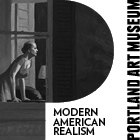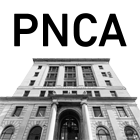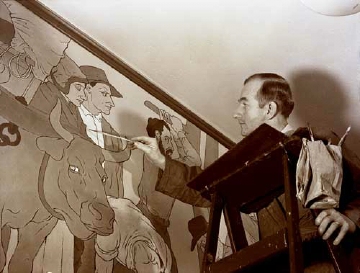
|
||
|
Portland art blog + news + exhibition reviews + galleries + contemporary northwest art
|
||
Art from the WPA at PNCA On the East Coast one might see a mural of Washington crossing the Delaware; in the Midwest, paintings of wheat fields and farm life; in the West, bronze statues of gold miners, wagon trains, and first meetings with Native Americans. We are all familiar with them. They are found in grade schools, high schools and post offices, state and federal office buildings, public parks and national preserves. They're the murals and statues depicting historic events and community projects, growth of industry, and small happenings in daily life. They are the art works of the Works Progress Administration, or WPA. Started in 1935 to create work for the massively unemployed, several programs were set up under the WPA to assist artists. These included the Public Works Art Project, the Section of Fine Arts, and the Treasury Relief Art Project. These programs had strict professional requirements for participation, allowing artists to make about $50.00 a month, a nearly living wage for the era. There were sharply drawn guidelines regarding subject matter and style. The artists were restricted to portraying historical events or scenes from everyday life in a realistic, or only slightly stylized, fashion. Only one program, the Federal Art Project, allowed more stylistic freedom, and a wider choice of subject matter. The current exhibition, Art from the WPA, at PNCA's Feldman Gallery is an eclectic selection of works by people in the era of, and under the auspices of, the WPA. While not all of the works were created specifically for the federal program, many of them were. And all of them reflect the purpose of the projects in one way or another. The artists represented also had ties to the then Museum Art School, which became PNCA. Most rewarding to the local viewer are the associations with local sites such as Timberline Lodge and familiar scenes of forest and farm land. Decoration - Floral Still Life by Margery Hoffman Smith greets the viewer on entering the gallery. An impressionistic blue and white ceramic bowl is depicted, filled with red, orange, yellow and blue flowers. Hoffman Smith apparently created such paintings for Timberline Lodge, and this is reflected in the hand carved, though incongruously gold painted, frame. Also incongruous, is The Dying Fisherman by John Ballator, dated 1933. This painting has a distinctly religious aspect. Two men and a woman pull a figure from the waves. All are dressed in flowing, brightly colored draperies, rather than modern dress. The composition is that of a Renaissance deposition from the cross. There is no clue given about where this painting was intended to hang, but it seems more appropriate for a church than for a government building. Ballator is known to have painted, with Louis Bunce and Eric Lamade, murals for the St. Johns Post Office. Forest, by Littleton Dryden, is far more stereotypically Oregonian. Painted for the Soil Conservation Service, it is part of a series meant to illustrate the consequences of deforestation. This must be the "before" picture, showing an idyllic scene of virgin timber, deer, fresh running stream, and filtered sunlight. One of the most impressive characteristics of some of the paintings, is how the artists comprehensively included in their compositions so many varied aspects of life. History was a predominant theme. In Rockwell Carey's Early Mail Carriers of the West, 1937, one sees a panoramic landscape that includes a pony express rider, a steam boat, the building of the rail road, and an already functioning steam locomotive. And it's a convincing layout. In Panels for Mural Competition Arthur and Albert Runquist use a geometric style to show fruit packers and fishing activities. These homey, domestic businesses are shown to be the forerunners of big industry by including in their respective backgrounds oil fields and tanker ships. On a smaller scale, Martine Gangle, in 1934, painted Woman Feeding Chickens, a salute to domesticity. Bue Kee's ceramics of fruit, a beaver, and a larger terra cotta goose, also created for Timberline Lodge, seem to reference home and farm, as well, and are charmingly characteristic of the Northwest. A few works show a more adventurous, modern style. Clown, by Clifford Gleason, is post-impressionistic, and the subject matter is outside the preponderance of works presented here. It is a dynamic study, not quite Soutine-intense, but thought provoking. Similarly, Darrel Austin's Woodchoppers are Max Beckmann-like figures, appearing wounded and worn out. I have yet to understand what Orrie Greaves' Fisher Folk has to do with Tongue Point Naval Air Station, for which it was created in 1941. Showing a possibly Hispanic community of fishing people with two American sailors looking on, it has been used to promote this exhibition, but is one of the weakest pieces here. The figures are cartoonish, with little muscle definition. The composition is lopsided, and the colors pallid. In its favor, and the question arises if this was a policy of the WPA, the MAS, or the current PNCA, there is a higher percentage of women artists represented in this show than is usually the case. Lucia Wiley's serigraphs depict their subjects in swirling, intimate style, and Charlotte Mish's Ship Launching challenges the stereotype that women artists are only interested in feminine subjects. The WPA was disbanded in 1941, as the federal government turned its attention to the wars in Europe and the Pacific. Unemployment ceased to be the problem it had been. In its wake, the programs left several hundred thousand murals, easel paintings, sculptures and prints. The PNCA has presented a small but representative sampling of those of most interest to the people of the Northwest.
Posted by Andie DeLuca on July 10, 2005 at 15:36 | Comments (0) Comments Post a comment Thanks for signing in, . Now you can comment. (sign out)
(If you haven't left a comment here before, you may need to be approved by
the site owner before your comment will appear. Until then, it won't appear
on the entry. Thanks for waiting.)
|
| s p o n s o r s |
 |
 |
 |
 |
 |
 |
 |
 |
 |
 |
 |
 |
 |
 |

|
Site Design: Jennifer Armbrust | • | Site Development: Philippe Blanc & Katherine Bovee | |


